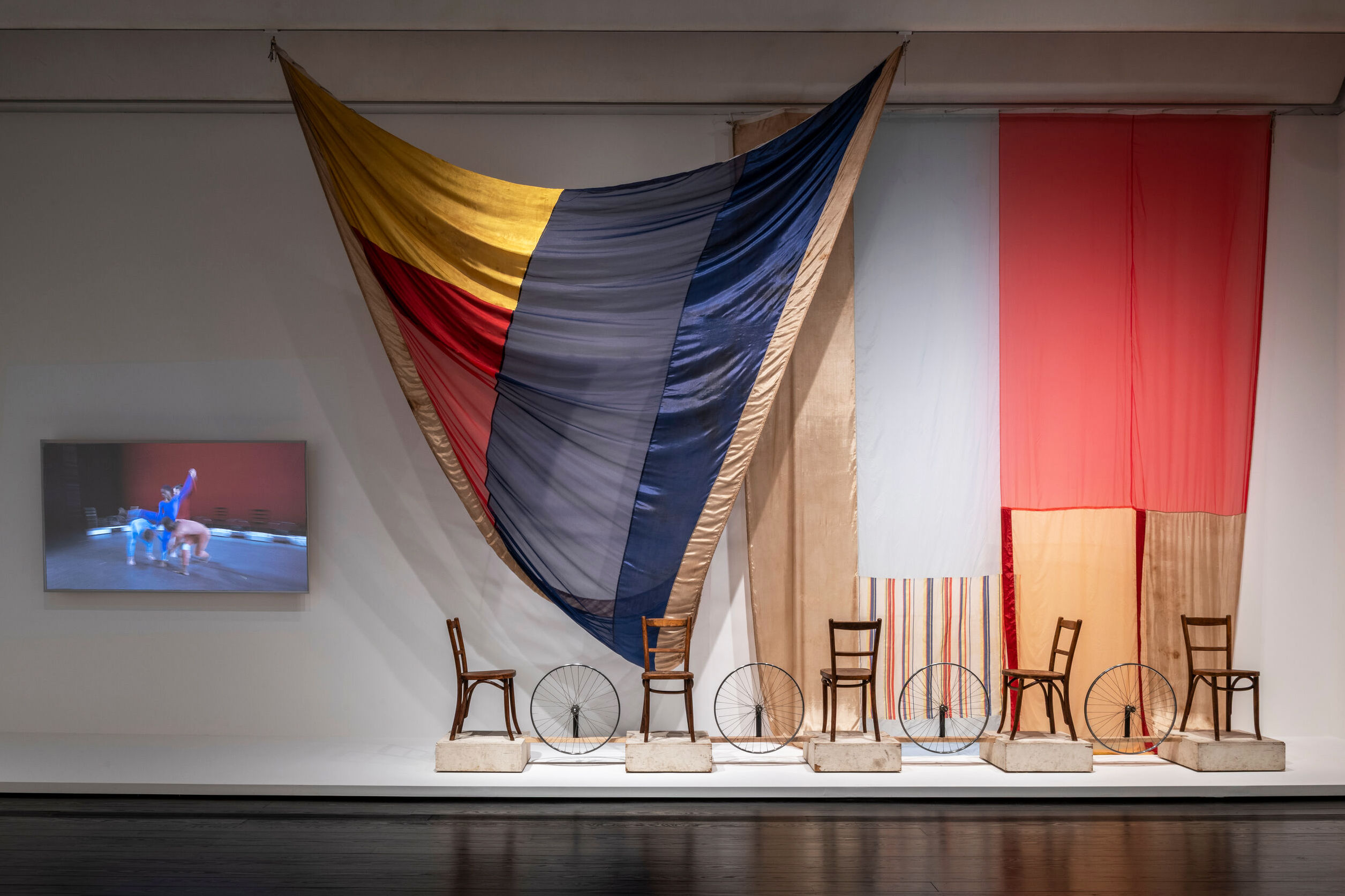This 'Event' Marries Cunningham, Cage, and Johns

Dan Flavin, untitled, 1996. Installation view, Richmond Hall, The Menil Collection, Houston.
Image: Hickey-Robertson
When was the last time you went to a performance that broke your expectations?
From your first step into “Arrivals and Departures,” an astutely-titled public program of Merce Cunningham, John Cage, and Jasper Johns in the Menil Collection’s Dan Flavin Installation at Richmond Hall, any preconceived ideas you have about movement, music, and artistic expression will melt into the fluorescent rainbow beaming along the walls.
The concert and dance “Event” (a Cunningham-specific term) presents work from a triumvirate of 20th century artistic giants and is also a three-fold collaboration among the Menil Collection, the Merce Cunningham Trust, and Houston Ballet.
Cunningham formed the Merce Cunningham Dance Company in 1953 with composer John Cage (best known for his so-called “silent” piece 4’33”) as its musical advisor. Jasper Johns took over as the company’s artistic advisor in 1967 and designed sets and costumes for its productions. Each a revolutionary figure in their own right, they were all men who viewed art with the same sense of what art did in the world.
As an Event, the 60-minute performance spans dance from 1969 to 1978 and comprises excerpts from Canfield, Landrover, Un jour ou deux, and Exchange (staged by former Cunningham dancers Patricia Lent and Andrea Weber). A rigorous and precise chance-driven modern technique, you can’t just pick up and dance Cunningham’s choreography; you have to train with Cunningham dancers, and six dancers from Houston Ballet used their vacation time to rehearse.
Per Cunningham’s philosophy, the dancers and the musicians have been rehearsing separately and won’t come together until the actual performance—a leap for dancers who are used to hearing music to understand their movements.
“I’ve never worked in that capacity before,” Houston Ballet soloist Oliver Halkowich told me. “We’re so used to rehearsing so long with music that everything is calculated. This is really based on a rhythm that the six of us had to kind of keep in our bodies through cues by feeling each other.”
The music, curated by percussionist Brandon Bell and performed by a corps of musicians, shows a range of Cage’s work from the melodic and percussive to the later indeterminate—sung pieces like Litany for the Whale, where each letter of the word “Whale” attaches to a pitch spread out in recitation and response, and Inlets, a work for three players turning water-filled conch shells to achieve just the right gurgle.
Also on the program is Cage’s Third Construction, a 1941 work that has become quintessential in the percussion realm. It’s a work that percussionist Craig Hauschildt, who will perform a number of works during the event, has been waiting a lifetime to play.
“I was ecstatic,” he said. “I feel like Third Construction in particular is considered a masterwork in percussion, but it just kind of sits on this pedestal. Get it into an art museum, and it breathes a little bit better, and then you add the dance to it—it was conceived with dance, and it’s supposed to be danced. Without it, it’s missing something, like its mother isn’t there.”
When I talked to Halkowich and Hauschildt, both were wondering what it would be like when dance met music in the glowing lights of the Flavin Installation.
“I was practicing last night, and I was thinking about the dancers,” Hauschildt told me. “How would we interact with each other? If I take time here, how will they respond to it?”
Halkowich was wondering the same thing from the other side of the equation.
“I don’t know what to expect,” Halkowich said. “We’re all professionals, and we know what to expect as a performer, but there are some outside elements that will make it interesting.”
But their uncertainty bodes well. Cage once said writing music had to take the form of a paradox, a kind of purposeless play. It sounds complicated—and it is—but it’s also very simple. It’s a way to wake up to living when life acts on its own accord.
Due to high demand and limited seating, reservations for this performance are full. More info at menil.org.




